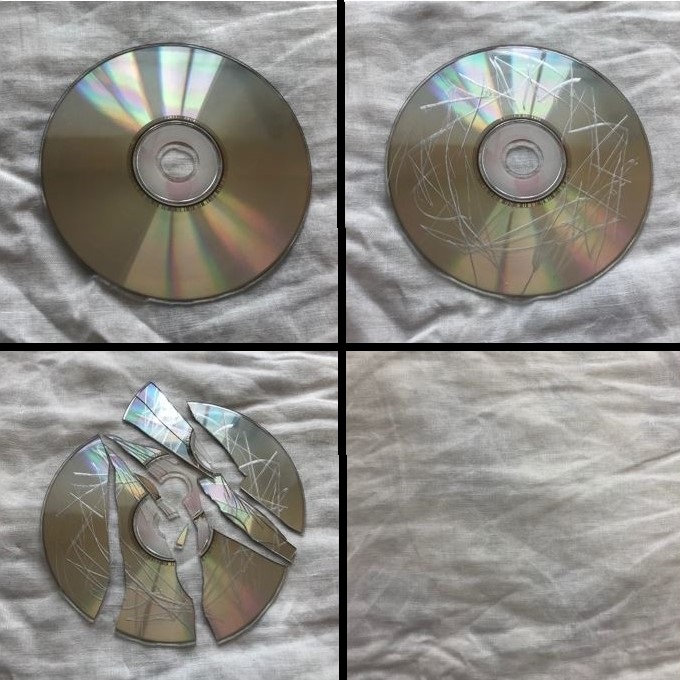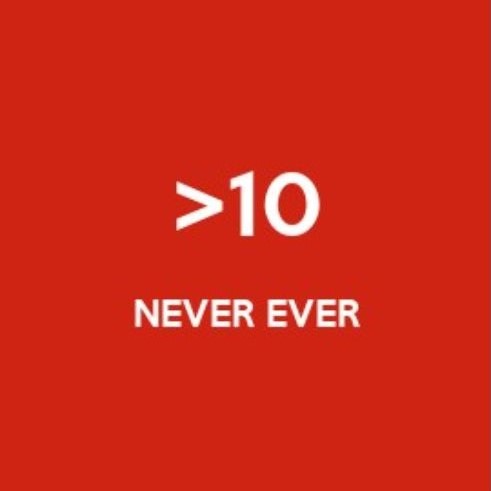 Day of reckoning. I launched the website on 1st March 2014. This is seven years ago. Seven is very popular. People often pick number seven when asked to choose a number between 1 and 10. In many religions and civilisations number seven has a special position. Seven is magic. So many things count to seven. Of the first ten numbers, seven is the most prime. You cannot multiply or divide it within the group. Seven is also the number of completion. Is now a good time to complete this nonsense? The first blog entry I posted had the dramatic title "So it begins...". Since then I have posted an anniversary blog post this time every year. The second blog post (2015) had the expectantly title "So it continues...". Here, I discussed the past, present and future for the site. The third blog post (2016) had the prosaic title "And so it goes on and on and on and on and on...". Here, I did some merciless following up on ambitions and promises. The fourth blog post (2017) had the patronizing title "The necessity of content gardening". Here, I stated that a website, with proper content gardening, could live forever. The fifth blog post (2018) had the technical title "Ratchet effect through organic growth”. Here, I speculated how web indexing and algorithms drove traffic to unprecedented levels. The sixth blog post (2019) had the glorifying title "5 years and 100 000 hits". Here, I rattled off statistics lengthwise and crosswise. The seventh blog post (2020) had the dutiful title "The show must go on". Here, I concluded that the responsibilities I have towards society are too important to be calling it quits. Today, it's time again for a new blog post. The visitor counter indicates 150 601.
Day of reckoning. I launched the website on 1st March 2014. This is seven years ago. Seven is very popular. People often pick number seven when asked to choose a number between 1 and 10. In many religions and civilisations number seven has a special position. Seven is magic. So many things count to seven. Of the first ten numbers, seven is the most prime. You cannot multiply or divide it within the group. Seven is also the number of completion. Is now a good time to complete this nonsense? The first blog entry I posted had the dramatic title "So it begins...". Since then I have posted an anniversary blog post this time every year. The second blog post (2015) had the expectantly title "So it continues...". Here, I discussed the past, present and future for the site. The third blog post (2016) had the prosaic title "And so it goes on and on and on and on and on...". Here, I did some merciless following up on ambitions and promises. The fourth blog post (2017) had the patronizing title "The necessity of content gardening". Here, I stated that a website, with proper content gardening, could live forever. The fifth blog post (2018) had the technical title "Ratchet effect through organic growth”. Here, I speculated how web indexing and algorithms drove traffic to unprecedented levels. The sixth blog post (2019) had the glorifying title "5 years and 100 000 hits". Here, I rattled off statistics lengthwise and crosswise. The seventh blog post (2020) had the dutiful title "The show must go on". Here, I concluded that the responsibilities I have towards society are too important to be calling it quits. Today, it's time again for a new blog post. The visitor counter indicates 150 601.
Assessment
Executive summary: I have been muddling through in the time of the pandemic. The last year has been very dull due to the pandemic, but pretty good when it comes to site activity. My day job takes a lot of my time, focus and energy. Working from home isn't a good idea. At least, not for me. Work is carried out at the workplace and home is home. Fortunately, my workplace has been open almost all the time since the outbreak. All work and no play makes Jack a dull boy. However, I'm too tired to do anything on workday evenings. I do most of the site maintance on weekends. Your brain needs a rest now and then. It's relaxing to read and write about other things than work-related matters. I'm proud to say that the site has a strong focus on content. Content is king. No content, no visitors. The hard part of running a website is getting visitors to the site and then keeping them there.
Visitor statistics
To go from zero to 150 000 visitors took 2 548 days, which is equal to seven years. Business was slow in the beginning. From zero to 10 000 took 264 days. After 50 000 visits something happened. The web indexing and Google algorithms began to kick in. The step from 50 000 to 60 000 visitors took only 131 days. The average number of days for another 10 000 visitors has since then been around 130-140.
| Hits | Date | Days | Total |
| 10 000 | 2014-11-20 | 264 | 264 |
| 20 000 | 2015-07-05 | 227 | 491 |
| 30 000 | 2016-03-05 | 244 | 735 |
| 40 000 | 2016-10-21 | 230 | 965 |
| 50 000 | 2017-04-09 | 170 | 1 135 |
| 60 000 | 2017-08-18 | 131 | 1 266 |
| 70 000 | 2018-01-09 | 144 | 1 410 |
| 80 000 | 2018-05-19 | 130 | 1 540 |
| 90 000 | 2018-10-06 | 140 | 1 680 |
| 100 000 | 2019-02-17 | 134 | 1 814 |
| 110 000 | 2019-07-16 | 149 | 1 963 |
| 120 000 | 2020-01-03 | 171 | 2 134 |
| 130 000 | 2020-05-03 | 141 | 2 275 |
| 140 000 | 2020-10-10 | 140 | 2 415 |
| 150 000 | 2021-02-20 | 133 | 2 548 |
Department statistics
I wrote one new article last year, listed one more artist in the table, created zero new lists and wrote 26 blog entries. I also have a list of 4-5 bands waiting to be included in my prestigious article series.
| Department | 2021-03-01 | 2020-03-01 | 2019-03-01 | 2018-03-01 | 2017-03-01 |
| Articles | 67 | 66 | 65 | 62 | 62 |
| Artists | 142 | 141 | 138 | 135 | 128 |
| Lists | 42 | 42 | 42 | 32 | 27 |
| Miscellaneous | 9 | 9 | 9 | 9 | 8 |
| Blog | 184 | 158 | 129 | 99 | 84 |
Most visited pages
The five pages below are the most visited. The order of precedence has shifted over time. The start page (Home) is and have always been the most visited page. The second page is the list "10 essential gothic country albums", which comprises a canon of must-have gothic country albums. A newcomer on the top-five list. Review of "Fossil" (Sons of Perdition collaborative album) is placed as number five. The Articles page previously held this position for four years straight in a row. It's now placed as number seven.
| No | Page | 2021-03-01 | 2020-03-01 | 2019-03-01 | 2018-03-01 | 2017-03-01 |
| 1 | Home | 150 601 | 124 031 | 100 813 | 73 857 | 46 277 |
| 2 | 10 essential gothic country albums | 24 663 | 19 722 | 14 372 | 7 540 | 3 946 |
| 3 | Artists | 19 410 | 16 228 | 13 312 | 9 983 | 5 513 |
| 4 | Sons of Perdition | 13 646 | 11 814 | 9 616 | 7 753 | 4 137 |
| 5 | Review of "Fossils" | 13 390 | - | - | - | - |
Flaws
The website has been up and running twenty-four seven. No incidents to report. Only Russian spam bots. I don't know how they find the time and energy. I felt compelled to disconnect the YouTube module on the site since the videos are living matter. If you stumble over any obsolete or incorrect information or any dead links don't hesitate to contact me and I will fix it. I take some pride in that the website is updated.
Reflections
I haven't received a single e-mail from market or web solutions companies where they claim earnings from the site. The site is non-profit and free of advertisment. This is the way it has been and will always be.
Future
Seven is the number of completion. Seven is also the number following six and preceding eight. Therefore, the nonsense will go on. I will go on untiringly within the limits of family, work and other duties.




